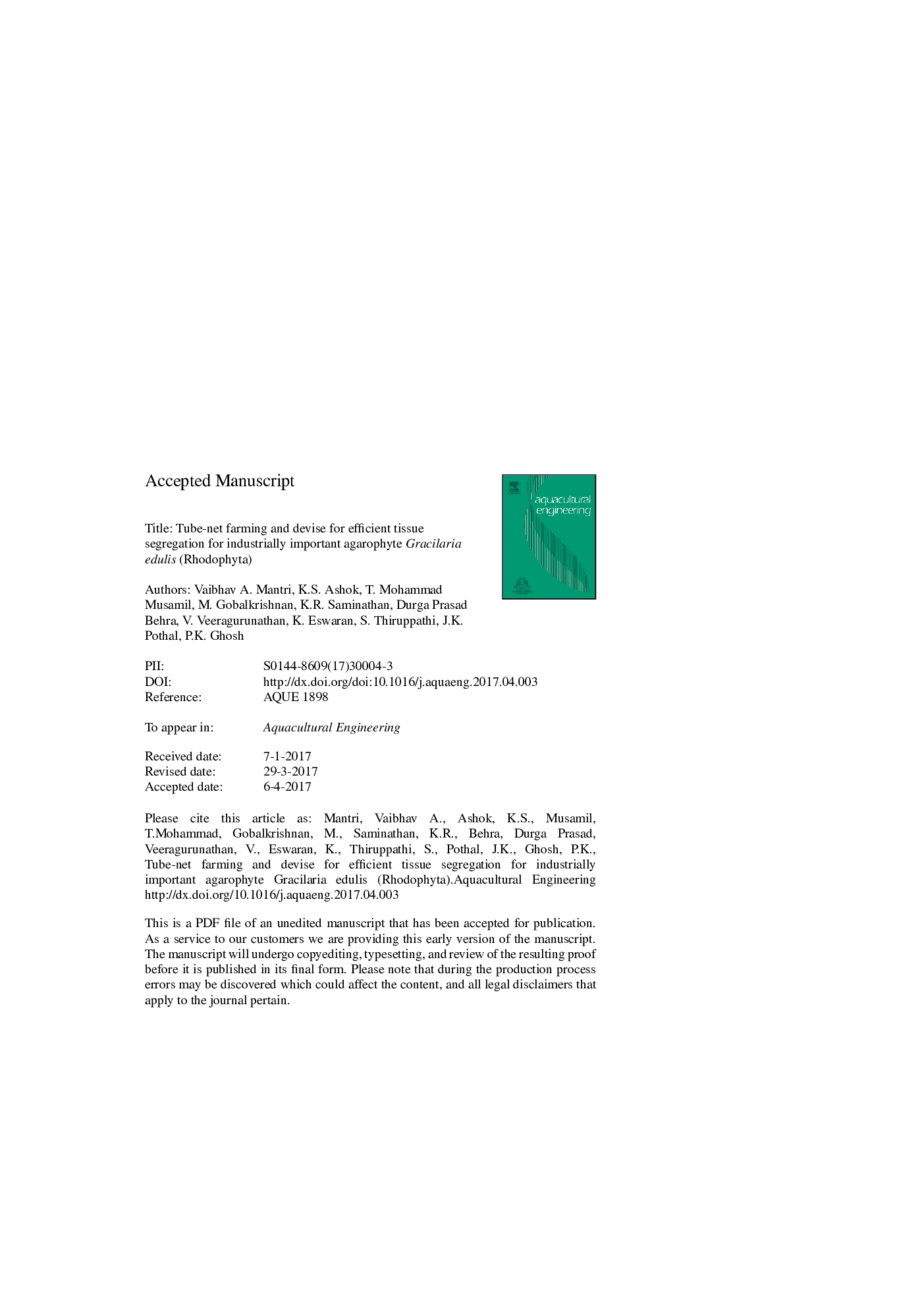| Article ID | Journal | Published Year | Pages | File Type |
|---|---|---|---|---|
| 5763945 | Aquacultural Engineering | 2017 | 14 Pages |
Abstract
According to the Food and Agricultural Organisation of United Nations seaweeds are being increasingly farmed rather than gathered. It is evident that, seaweed mariculture holds considerable promise for diversifying the livelihood of low-income, artisanal fishermen. Nevertheless, increased labour constraints have been realised as a bottleneck for the sustainability of farming in developing countries, where spending on infrastructure cost is meager. We herein report a tube-net farming for industrially important red alga Gracilaria edulis and also a new design for a harvester. The average biomass yield reported for the tube-net method over a 45 day growth cycle was 11.93 ± 2.55 kg fr wt raftâ1; while the average daily growth rate was 3.40 ± 0.57% dayâ1. Harvesting is a critical step which determines the quality of a product. However, traditional methods do not allow segregation of product-rich (SAP and hydrocolloid) older thallus, from the growing apical tips. A two stage harvesting operation successfully achieved segregation of 33.87-55.56% of the clean apical biomass and 35.95-65.02% of the basal portion of the alga, leaving behind an empty tube for re-stocking. The tube-net farming method, coupled with an improved harvesting efficiency was aimed at developing appropriate management strategies for commercial farming of seaweeds.
Keywords
Related Topics
Life Sciences
Agricultural and Biological Sciences
Aquatic Science
Authors
Vaibhav A. Mantri, K.S. Ashok, T. Mohammad Musamil, M. Gobalakrishnan, K.R. Saminathan, Durga Prasad Behera, V. Veeragurunathan, K. Eswaran, S. Thiruppathi, J.K. Pothal, P.K. Ghosh,
